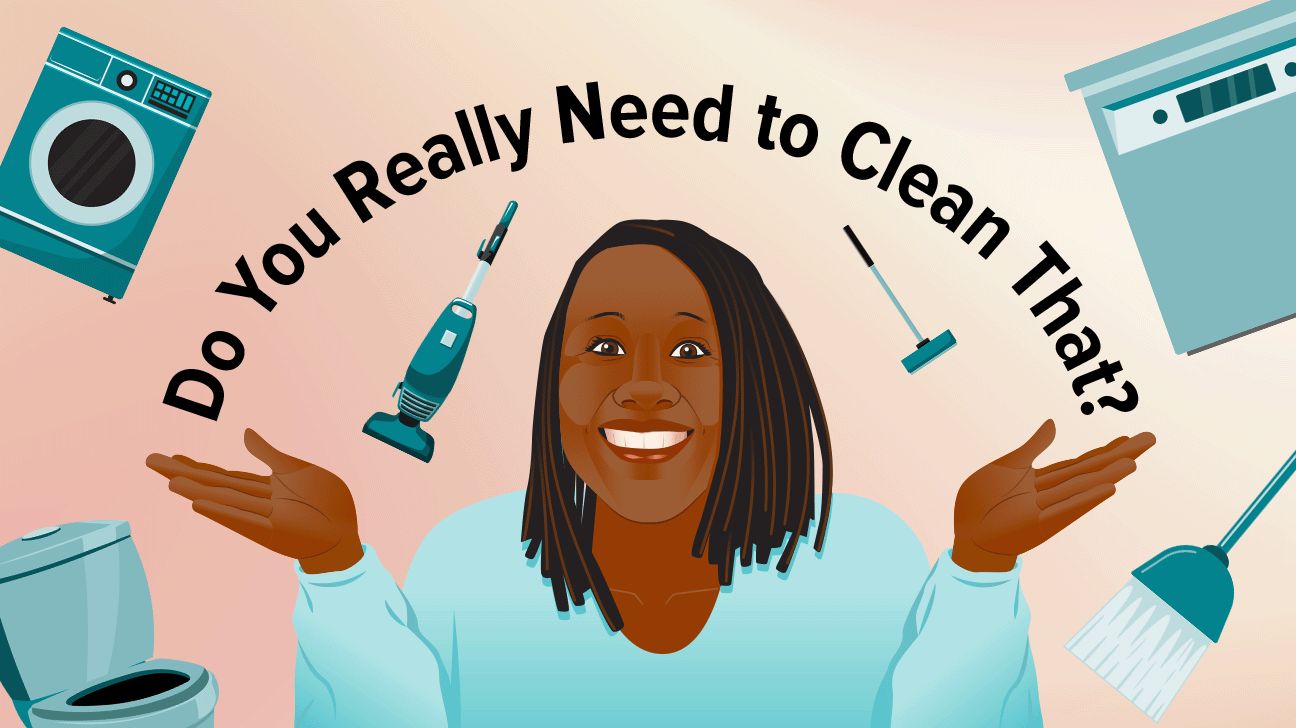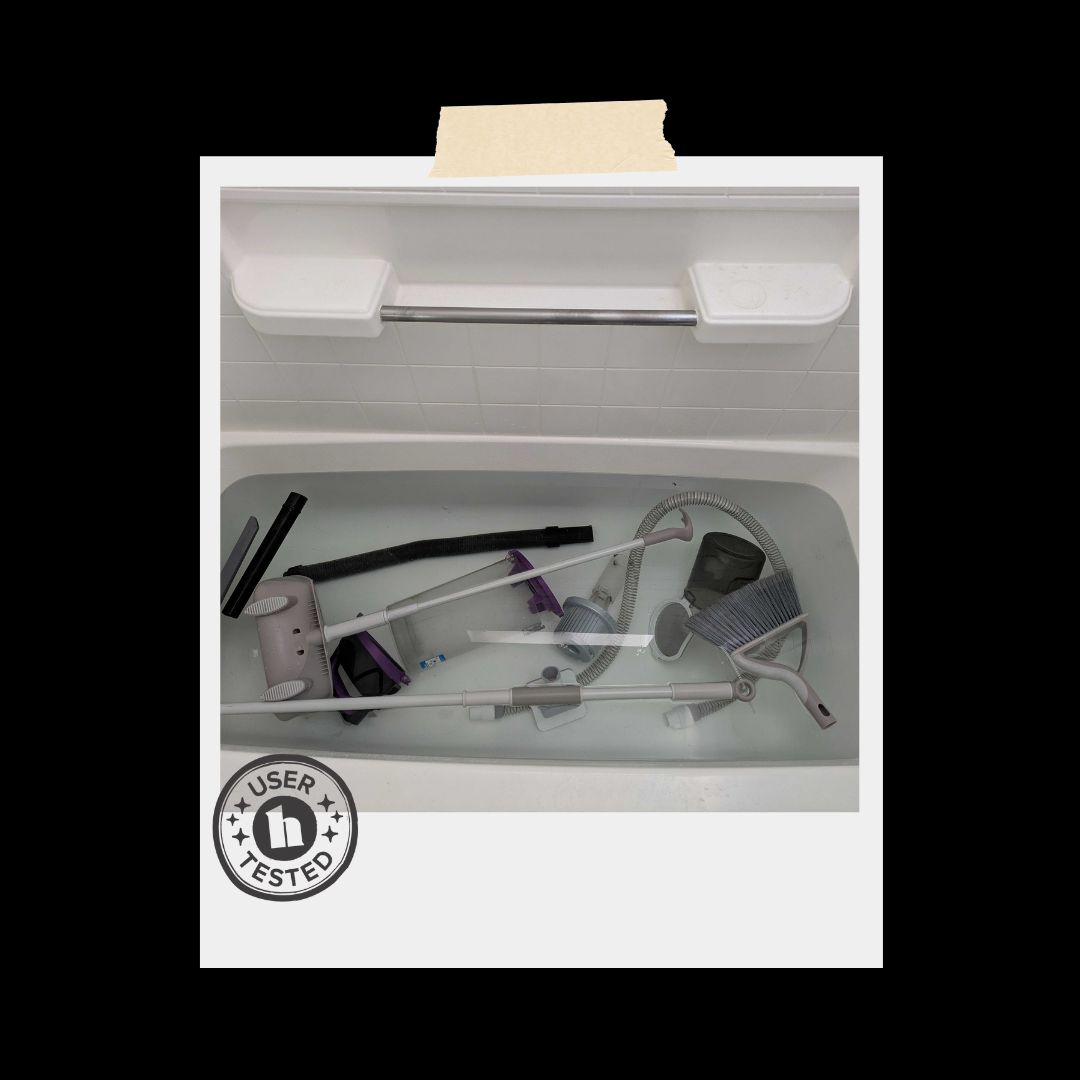Key Takeaways
- Bacteria, mold, allergens, and dust accumulated in household cleaners like your washer and dryer, dishwasher, vacuum, broom, and mop can lead to real health hazards and allergy issues.
- Viruses, bacteria, skin infections, and respiratory issues can persist in your home if you don’t deep clean major appliances and devices — especially rubber seals.
- Cleaning accessories to clean your cleaners, sanitizing tablets, and even concentrated vinegar can help you get the job done.
Here’s the dirty truth: Your cleaning appliances need cleaning, too.
But how often and how deeply do we need to clean them?
Read on, and you’ll find out. Suffice it to say:
Though we lean on (literally!) our washers, vacuums, and mops to sanitize and freshen, plus remove debris, unless we empty them manually and cleanse the innermost parts, they may be soaking our surfaces (and our bodies) with bacteria, mold, and allergens.
Hello Lord, it’s me again. As with our first article in this series, I couldn’t even finish writing this without without sterilizing my broom and mop heads, as well as the attachments and hoses for my vacuums.
If you don’t believe the warning at first glance to clean, sanitize, and disinfect what cleans your home, check the following FAQ. If you trust our research, skip ahead to the cleaning counsel by device.
*Note: Data and research on our appliances and sanitation are limited, so we included what we could find, plus insights obtained from manufacturers and third-party sources with tertiary knowledge on the topic.
Those rubber seals, debris catchers, and crevices are incubating bacteria, wet debris, and yes, mold.
Research from 2024 on heat-bearing household appliances (mainly ovens) describes that these appliances don’t guarantee full sterilization, especially if heat distribution is uneven or the appliance isn’t regularly cleaned (more on what classifies as “cleaning” below).
It goes on to add that though appliances, including dishwashers and dryers’ heat, can reduce microbes, they may not reach temperatures or stay in the heat-bearing appliance long enough to kill all bacteria — like “extremophiles” — or allergens (think: dust mites or pet dander).
James Mora, founder of DailyHomeSafety.com, discusses heat-resistant microorganisms and says these so-called “thermophiles” are very resistant to temperatures below the bacteria-killing threshhold of 149°F (65°C). Incidentally, he claims most dryers on the market don’t run at temperatures close to 150°F (65.5°C).
A 2021 study sampled the detergent dispensers, rubber seals, sprinklers, and water drains of 10 dishwashers. It found 27 strains of yeast within these four dishwasher parts and seven yeast strains in the circulating water within the dishwashers.
And that’s with the average dishwasher operating between 120°F and 160°F (48.4°C and 71.1°C).
A 2022 research review finds vacuums with and without HEPA (high efficiency particulate air) filters can just redistribute allergens and bacteria into the air and on the floor if not regularly maintained by cleaning and sterilizing.
In other words, without cleaning removable parts as directed by your particular vacuum manufacturer — in addition to emptying the main receptacle — we’re aerosolizing asthma triggers, pet dander, and pollen.
Note: Vacuums with HEPA removable filters are often made with glass fibers or materials that need a rinse only to keep it clear of debris. In fact, detergents and chemicals could damage its effectiveness.
Every time we store these tools without cleaning and disinfecting — especially when damp — we are allowing fungi, viruses, and the following bacteria to incubate, multiply, and prepare their troops to siege our surfaces.
A 2023 study demonstrates that contaminated cleaning tools can affect or worsen respiratory and immune health.
According to the
Cleaning
usually with water and soap to remove dirt, germs, stains, and impurities from surfaces
Sanitizing
often with weaker bleach solutions, sanitizing sprays, or peroxide solutions (toys) to kill germs to public safety regulations after cleaning
Disinfecting
done with stronger bleach solutions or chemicals after cleaning
Washing machine
✅You’ll want to clean the drum (the main agitator part) with your “clean washer cycle,” but other items need to be removed, cleaned, and disinfected according to your manual.
Detergent dispenser: If you regularly add bleach, detergent, or fabric softener here, know it can back up with detergent residue and mold.
Door gasket/seal (front-load washers): Front-loading washer-ers take note: The rubber seal around the door traps debris, soap residue, and moisture, which can cause mildew and mold to fester.
Lint filter, aka debris trap: Your washer may use any combination of the aforementioned to describe this removable piece. This component is inside the agitator or along the top perimeter of the drum, and some front-loading machines (typically at the bottom front, behind a small hatch). You’ll want to remove, clean, and disinfect more than a couple of times per year (like I did 🫣, below)!
P.S.
Most appliance manufacturers will recommend leaving your washer door ajar between washes to reduce the chance of mold growing in your washer. So make sure to close off access for pets and tots with room doors and baby gates.
Dryer
✅Regularly empty the lint catcher. Wipe down the drum with a nonchemical solution semi-regularly and let it air-dry. Seasonally brush out the air vent through and through.
Air vent: You can use the following kit to brush out debris in your dryer air vent.
Drum (main part where clothes dry): Wiping the drum is safest with a nonchemical solution, and we like this industrial-strength vinegar dilute 50:50 to spray, wipe down, and fully air-dry. While you’re at it, cleaning the door and handle is also prudent.
Dishwasher
✅Remove the filter and clean once monthly if you have around seven loads per week and don’t scrape or rinse before loading the dishwasher. Use the “clean” dishwasher cycle with natural vinegar, baking soda and/or lemon, or a sanitizing tablet regularly.
Filter: Typically, this is a removable part on the bottom of the tub beneath the ground rack. Check your manufacturer’s instructions for your particular washer to learn how to open the drain area and clear the debris.
Whirpool Appliances describes a sliding-scale timeline for how often you need to clean the dishwasher filter based on how you treat the dishes before loading and how many loads you wash per week.
Door and rubber seals: The Sugelary mildew and mold gel mentioned above is effective for cleaning these areas. It’s wise to run a cleaning cycle in between loads to well-rinse after sterilizing.
Drain area: Check your manufacturer’s instructions for your particular washer to learn how to open the drain area and clear the debris.
Vacuum
✅Sponge filter inside your HEPA vacuum? Rinse only! Paper filter: receives the good ol’ brush off! Everything else can get a brush through, wipe down, and short soak with diluted bleach to disinfect semi-regularly. Make sure to rinse well and dry out thoroughly.
Filter: We’ve said it twice now, so we’re clear: These little foam puffies take a light rinse. The paper accordion-folded filters are best maintained with a light brush off only. Chemicals compromise the structure of the material, and soap could clog them up. Save the soap, water, and bleach dilution for the rest of the detachable parts. You can also just purchase filter replacements.
Dust bin or dustbag: At best, vacuum dust bins need to be emptied after each use to help prevent to circulation of allergen aggregation around your home like an air freshener. At worst, they should be emptied when the receptacle reaches half to two-thirds full.
Give your bagless vacuum cleaner a thorough cleaning at least once every 6 months or anytime it stops working effectively.
Dustbags are old school, but if you have such a vacuum model, you’ll want to replace the inner bag every 3 months if you don’t have a lot of carpet in your space and only vacuum once per week. If you vacuum a mostly carpet home, you often opt to change the filter bag every other month at least.
As an added bonus, we’ve vetted an all-natural vacuum bead product to freshen your vacuum and your floors. It’s made with essential oils that could also keep pests away.
Broom
✅Frequently use a scraper or manually remove all hair, string, or debris that tangles around the brush. It’s also wise to have a separate broom for outdoor spaces.
Broom bristles: Your comb or hairbrush gets combed out of all the loose shedding and particulates gathered along the way, so why wouldn’t your broom? Detangling your broom’s bristles with a scraper, brush, or even a paper towel keeps the bristles from possibly harboring dander, bacteria, and other allergens.
Mop
✅Cleaning strategy will depend on the type of mop head, but it’s important to clean, sanitize, and disinfect regularly, as this tool is prone to mildew and festering pathogens. We recommend:
String mop: If you can detach this mop head, it’s best to wash it regularly. If you can’t, it’s wise to soak it in a bleach dilution semi-regularly.
Strip, spin, flat, or dust mop detachable head: We’re recommending a scraper to remove the debris from these detachable heads before washing.
Sponge mop: These are hard to keep sanitary, so it’s best to replace them regularly, as one 2021 study concludes the most effective way to disinfect sponges is by using chlorine, boiling, or placing sponges in the dishwasher. The three strategies reduced Salmonella among other bacteria. While this may work if you have chlorine on hand or put counter sponges in boiling water or the dishwasher, it’s not practical for the sponge mop head.
So you’ve rubbed up some elbow grease sanitizing the inner workings of your cleaning appliances and tools. Now, how to keep the rest of it clean?
You can go the natural, eco-friendly route, or use a chemical cleaner for the dustpan, toilet scrubber (both the brush, the handle, and the thing that holds the brush 😏), and all handles.
Au naturel
For a weekly clean, you can concoct a baking soda scrub or a vinegar solution. Here are the recipes:
Baking soda scrub
- 1 tablespoon (tbsp) baking soda
- 1 tbsp water (or equal parts depending on size and number of containers to be cleansed)
Vinegar solution
- 1 part white vinegar
- 4 parts water
Rubbing alcohol or hydrogen peroxide
Both over-the-counter and medical-grade disinfectants are germicides for surfaces. Here’s the recipe:
- 1:1 equal parts hydrogen peroxide or rubbing alcohol to water
- wipe the outer surface down and allow to fully air-dry
Cleaning agents
Bleach dilution is what the CDC recommends using, and it specifies:
Yes👏🏾you👏🏾 really👏🏾 need👏🏾 to👏🏾 clean👏🏾 that. If we don’t clean, sanitize, and disinfect (in that order) what cleans our home regularly, we may very well be coating our clothes, dishes, and floors in now-scented bacteria, mildew, and allergens. Speaking of allergens, we’re just blowing them back up into the air if we don’t brush out and cleanse our vacuums.
You have the info, now you can create a routine that fits how often you use the appliances and tools that are supposed to clean our homes.






